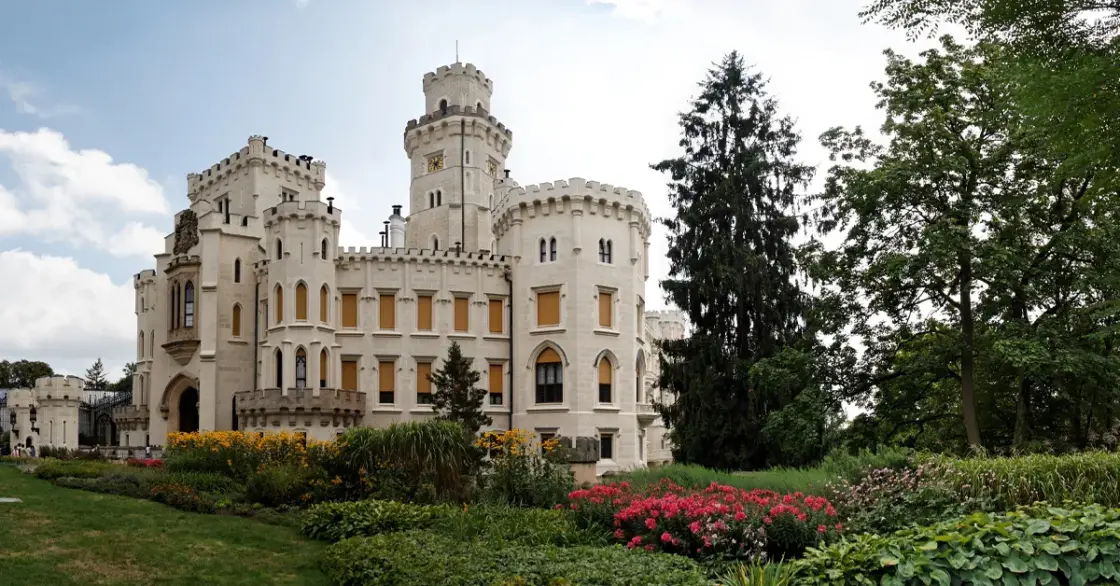Forgotten History: How The Invention Of Gutters Changed Home Design

Ever heard that joke about your gutter system? I’d tell it to you, but it’ll just go over your head. All joking aside, gutters are perhaps one of mankind’s most underappreciated inventions. They exist at the end of our roofs, and we pass under them a few times a day, but few people give gutters a second thought. However, they serve an incredible purpose. Gutters create a channel to divert water away from homes and structures, protecting roofs, foundations, and landscapes from the threat of water damage. As ingenious as this invention is, we take it for granted. Why? Well, gutters have been on buildings for as long as anyone can remember… right?!
In The Beginning: The Indus Valley Civilization of South Asia
During South Asia’s Bronze Age, there emerged a civilization in the valleys around the Indus River. Known as the Indus Valley Civilization or Harappan Civilization, this group was notably sophisticated (a fact evidenced by the modern-day inability to decipher their written language). From 3300 BCE to circa 1300 BCE, this group prospered in an area stretching from modern-day Afghanistan to Northwestern India.
When archaeologists first excavated sites from this civilization, they were stunned by the urban layout of their impressive cities. Archaeological sites revealed advances in metallurgy and, interestingly, water management! This group established wells, and directed wastewater into covered drains, and ancient gutters.
Harappan gutters differed greatly from modern gutters. Built with burnt clay tiles, Harappan gutters channeled water away from streets and dwellings. Though they were not on roofs, this ancient design set the stage for our modern gutters.
Gutters Enter Their Infancy: Ancient Rome
The Roman Empire lent many things to the modern world. Aside from architecture and philosophy, they also spread the concept of the gutter. Roman roads were peaked in the center, allowing runoff water to slope down the road and divert through a gutter.
As the Roman Empire expanded, the idea of these gutters spread throughout new territories. This video by the Science Channel offers a bit of insight into what the gutters feeding ancient aqueducts looked like:
Early gutters were introduced in modern-day Britain by the Romans. However, as the Romans withdrew from British shores, the technology was largely forgotten.
The Norman Invasion Of 1066
Some of the greatest stories of our time hail from the Norman invasion of Britain. Interestingly, the greatest outcome of this event was the development of modern English. (Aristocracy and the upper class spoke Norman French for a few hundred years as commoners continued speaking Old English. Between the 11th and 14th centuries, these languages slowly interacted and combined. Modern English was the end result.)
One of the other major outcomes of this conquest was the redevelopment of existing buildings and the construction of other incredible structures. Stone roofs were preferred, and these included gutters to divert water away from the vulnerable construction material. Oftentimes, these gutters flowed to gargoyles, where water would flow from their mouths and away from the building.
The Tower of London & King Henry VIII
After Norman architecture became common in Britain, so, too, did gutters. One building with early gutters was the Tower of London, which includes the White Tower, so named for its striking white walls. In 1240, King Henry III ordered the Keeper of the Works at the Tower to extend the tower’s lead guttering to protect its iconic (and freshly whitened) walls. This resulted in the first-ever working downspout.
British history, as anyone with a bit of familiarity with history knows, has been ruled by a number of families over the years. One of the most infamous ruling families is the Tudors. Henry VIII was particularly infamous for separating the Church of England from papal authority and, of course, beheading two of his wives. He did, however, unintentionally assist in the advancement of guttering.
When Henry VIII enacted the Dissolution of the Monasteries, he appropriated their income and, interestingly, resources from the buildings. Both the government and wealthy noblemen stripped monasteries, nunneries, and other convents of their most valuable asset: lead roofs and gutters.
Lead suddenly became a common and accessible resource in Britain, meaning lead guttering was more accessible than ever before. Suddenly, it was reasonably affordable to weatherproof wooden gutters with lead linings.
The Georgian Era, Restoration, & Victorian Era
Cast iron grew more affordable in the 1700s, and it became a popular material for guttering. However, the New World was slowly easing into the world of gutters. Around the same time cast iron gutters were growing in popularity in Europe, wooden gutters were still a popular solution in what would become the United States.
Enter the Industrial Revolution, and suddenly gutters were being mass produced. This made them more affordable than ever before, and they were a commonality by the Victorian Era. Once the Victorians started incorporating gutters onto abodes, they noticed something startling: they were living longer! As gutters were keeping walls drier than ever before, diseases like pneumonia became less common… and less threatening, as dryer environments were a less favorable environment for bacteria.
The Modern Age Of Guttering
As the 1900s rolled around, metal rolling machines came to the market. Steel gutters became more and more common until, in the midst of World War II, metal was needed for the war efforts. Suddenly, plastic gutters grew in popularity.
As time passed, technology advanced. Seamless gutter machines came into play circa the 1960s, ushering in the era of aluminum gutters. Lightweight yet sturdy, these became the preferred gutter material in the United States. When the following decade introduced portable gutter machines, the desirability and prevalence of aluminum gutters only grew.
Today, gutters continue to be produced in a number of shapes and sizes. LeafFilter was invented as an easy add-on to existing gutters to keep them free of clogs. Clogs, as you may be aware, can cause gutters to overflow. In addition to dirtying walls (as Henry III hoped to avoid at the White Tower), clogged gutters can damage foundations, roofs, and landscapes. Additionally, clogged gutters may lead to flooding and mold growth… something that the Industrial Revolution gave us the capacity to avoid. Are you ready to eliminate risk and invest in the ever-evolving history of guttering? Schedule your free estimate today and find out how LeafFilter can protect your home.


